A 23 year old man is in critical condition after he was hit by a livery cab while driving his moped on Westchester Ave near the intersection of Southern Blvd, in Longwood, Bronx, NYC on Friday night. People who saw the accident said that the body of the young man was so badly mangled that he couldn’t be identified at the scene.
Read more in the NY Daily News
A report on police brutality indicates that NYPD officers are using the banned choke hold as a “first act” at alarming rates
 A troubling report examining 10 cases of police misconduct in New York during which cops used the prohibited chokehold move shows that in 4 of the cases police officers used chokeholds as a “first act” instead of verbal communication against citizens who had only confronted the cops verbally and not physically. The report was issued today by Philip Eure, the city’s first inspector general for the NYPD. The report is following the death of New York citizen Eric Garner who died this summer in Staten Island after a police officer put him in a choke hold. Last December the policeman who killed Garner was not indicted stirring public outrage and rallies against police brutality.
A troubling report examining 10 cases of police misconduct in New York during which cops used the prohibited chokehold move shows that in 4 of the cases police officers used chokeholds as a “first act” instead of verbal communication against citizens who had only confronted the cops verbally and not physically. The report was issued today by Philip Eure, the city’s first inspector general for the NYPD. The report is following the death of New York citizen Eric Garner who died this summer in Staten Island after a police officer put him in a choke hold. Last December the policeman who killed Garner was not indicted stirring public outrage and rallies against police brutality.
Read more in the New York Times and in the NY Daily News
Picture: courtesy of Wikipedia
A company selling products intended for medical training purposes is recalling some of its practice IV Bags as reports came out that they were being used on patients
To administer non sterile products intended for training to patients is medical malpractice that can have very dangerous consequences. Recently Wallcur, a company that sells medical products intended for training purposes only, received reports that some of its training Sodium Chloride IV Bags had been used outside of their intended use and administered to patients. These bags are not sterile and are for simulation purposes only. To prevent these products from being injected in humans or animals, the company recently issued a product recall and is intending to improve the labels before to continue the distribution of these products..
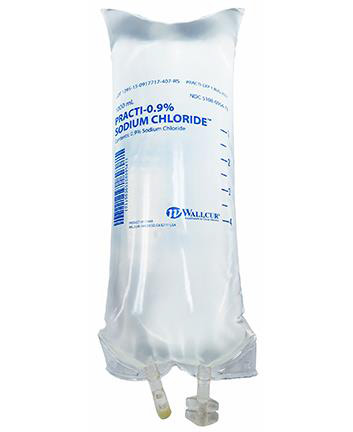
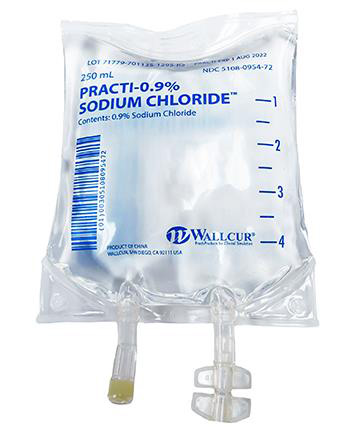
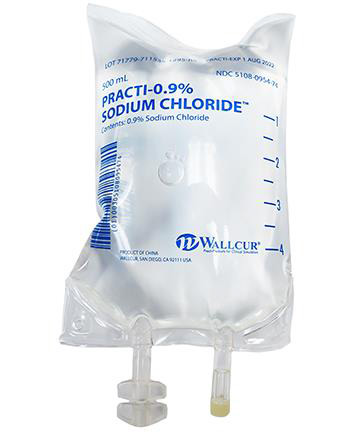
NYC Pedestrian fatalities at their lowest in 2014 according to preliminary data from the City
132 pedestrians died in traffic accidents in 2014 in New York City according to preliminary numbers announced recently by city officials. According to them these numbers are the lowest since 1910 when the city started to provide accurate traffic accident statistics. (See article in the New York Times).
The NYPD also released their monthly collisions statistics recently but only until November. The statistics for the year 2014 will be released at the end of this month. According to this data the number of people killed in a traffic accident in November 2014 was 25 compared to 35 in 2013. November 2013 was the worst month for traffic fatalities in NYC in 2013 followed by August 2013. This year so far the monthly number of traffic fatalities never went above 28, an improvement compared to 2013.
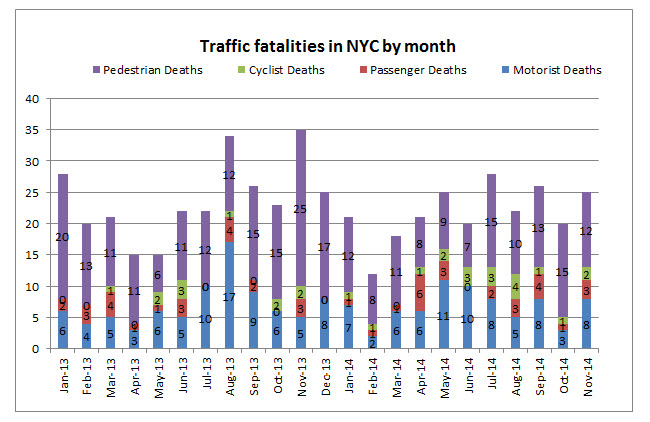
The number of people killed in a vehicle accident since the beginning of 2014 until the end of November is 238 compared to 261 during the same period for 2013, a decrease of 9% . The total number of people injured for this same period of 2014 is 46,769 compared to 50,541 in 2013 a decrease of 7.5%. Even though there were less deaths and personal injuries, NYPD statistics indicated that for the same time frame the number of motor vehicle crashes is 1% higher with 187,838 accidents in 2014 compared to 186,130 in 2013.
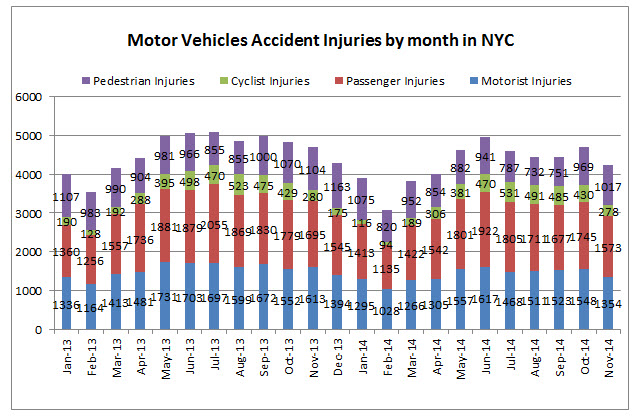
Continue reading →
New York Personal Injury Lawyer Ben Rubinowitz to speak at the NYSBA Torts, Insurance and Compensation Law Section and Trial Lawyers Section Annual Meeting
 Our Managing partner, Ben Rubinowitz will be speaking about “Using the Rules of Evidence in Trial Practice” at the Torts, Insurance and Compensation Law Section and Trial Lawyers Section Annual Meeting of the New York State Bar Association. A reception and dinner will be held Wednesday January 28th at Cipriani Wall Street and the CLE program will be held the following day, Thursday January 29th at the New York Hilton Midtown. Ben will speak during the afternoon program at 3:30. Under New York’s MCLE rule, this program has been approved for 7 MCLE credits consisting of 5 credit hours in Professional Practice and 2 credit hours in Ethic.
Our Managing partner, Ben Rubinowitz will be speaking about “Using the Rules of Evidence in Trial Practice” at the Torts, Insurance and Compensation Law Section and Trial Lawyers Section Annual Meeting of the New York State Bar Association. A reception and dinner will be held Wednesday January 28th at Cipriani Wall Street and the CLE program will be held the following day, Thursday January 29th at the New York Hilton Midtown. Ben will speak during the afternoon program at 3:30. Under New York’s MCLE rule, this program has been approved for 7 MCLE credits consisting of 5 credit hours in Professional Practice and 2 credit hours in Ethic.
25 people suffered personal injury in a bus accident in Brooklyn
3 people were critically injured, 3 others were seriously hurt and 19 of them suffered minor personal injuries in an accident between two cars and an MTA bus. The accident happened yesterday afternoon at the intersection of Utica Ave and Clarendon Rd in East Flatbush, Brooklyn NYC.
Unattended cooking caused the New Year’s Eve fire that killed 3 members of a Haitian-American family in Queens, NY
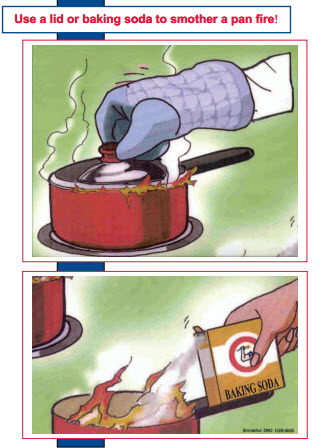 Home cooking is the number one cause of fire accidents and fire injuries in New York. 33 % of these fires are caused by unattended cooking. The most recent one happened in Queens, NYC, last week when a family left a traditional Haitian holiday soup unattended on the stove. The fire spread from the stove to the dining area and then to the living room and down the hall to the bedrooms. 3 people were killed and several firefighters suffered personal injuries as they were trying to save the victims.
Home cooking is the number one cause of fire accidents and fire injuries in New York. 33 % of these fires are caused by unattended cooking. The most recent one happened in Queens, NYC, last week when a family left a traditional Haitian holiday soup unattended on the stove. The fire spread from the stove to the dining area and then to the living room and down the hall to the bedrooms. 3 people were killed and several firefighters suffered personal injuries as they were trying to save the victims.
Unattended cooking often happens when the cook becomes distracted and leaves the kitchen for various reasons such as answering the phone or the bell, looking at TVor taking care of the kids.
To avoid fire accidents, remember to stay in the kitchen all the time when you are cooking. Also avoid wearing loose sleeves that can catch fire and keep the area around the stove free of paper towels or anything than can catch fire. Keep children away from the stove and turn pot handles on the wall side. Avoid very high temperatures and in case of a pan fire do not use water but baking soda or shut off the heat and use a mitt and a lid to cover the fire.
Danger on the road: 16.2% of 13,305 commercial trucks inspected during “Brake Safety Week” have been placed out of service
 Truck accidents related to brake failures, brakes out of adjustment, or other related brake problems represent almost 30% of all truck accidents on US roads according to statistics from the DOT. Many of these accidents could be be prevented by proper truck maintenance.
Truck accidents related to brake failures, brakes out of adjustment, or other related brake problems represent almost 30% of all truck accidents on US roads according to statistics from the DOT. Many of these accidents could be be prevented by proper truck maintenance.
Inspections conducted at a national level during a Brake Safety Week resulted in 16.2% of 13,305 trucks inspected being taken out of service. With an estimated 15.5 million trucks operating in the US this means that approximately 2.5 million trucks in the US are operating with brake problems… A pretty scary number!
Read the complete article in TruckingInfo
One teenager is dead and another one is seriously injured after both were struck by a hit and run driver while crossing a Bronx Street in NYC
 16 year old Dylon Ramirez is dead and a 15 year old female is in critical condition as a result of a pedestrian accident that happened yesterday around 5pm at the intersection of Baychester Ave and Crawford Ave in the Bronx, NYC.
16 year old Dylon Ramirez is dead and a 15 year old female is in critical condition as a result of a pedestrian accident that happened yesterday around 5pm at the intersection of Baychester Ave and Crawford Ave in the Bronx, NYC.
Both teenagers were crossing the road when a Honda hit them. The impact propelled the young man into the other lane of traffic where he was struck by another car.
The driver of the Honda fled but later came back to the scene of the accident and was arrested by the Police.
Winter driving safety tips to protect yourself from being injured in a car accident
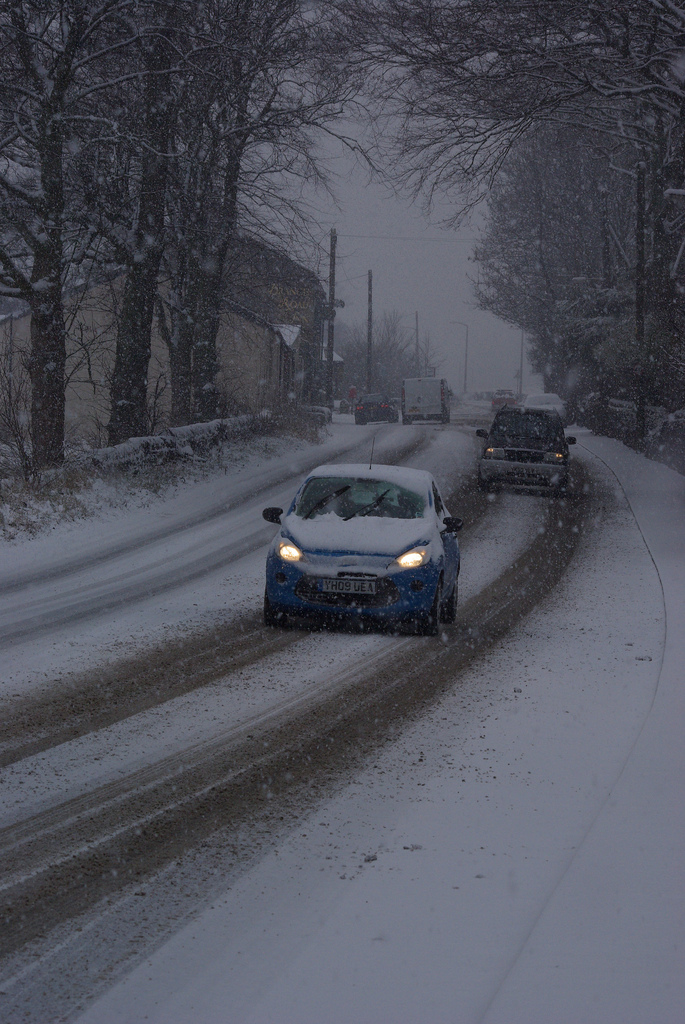 Winter weather conditions make the roads more dangerous and increase the risk of a car accident that could result in severe personal injury or death. Before you take a trip make sure to check the weather forecast and the road conditions and also verify if you need tire chains. Safe driving is key to prevent car accidents during the winter. Here are a few basic safety tips that can make a big difference when driving on wintry roads:
Winter weather conditions make the roads more dangerous and increase the risk of a car accident that could result in severe personal injury or death. Before you take a trip make sure to check the weather forecast and the road conditions and also verify if you need tire chains. Safe driving is key to prevent car accidents during the winter. Here are a few basic safety tips that can make a big difference when driving on wintry roads:
– Brush the snow and the ice from your car before driving – Buckle up. Seat belts are the most effective way to prevent death or severe injuries in a crash – Check the weather forecast and plan ahead what you will do if conditions are getting worse – Allow yourself a lot of extra time to your destination – Keep your headlights on all the time so you are more visible to others
– Drive smoothly, abrupt driving maneuvers such as sudden braking can be fatal – Lower your speed and allow extra space between you and the car in front of you
 New York Personal Injury Attorneys Blog
New York Personal Injury Attorneys Blog


